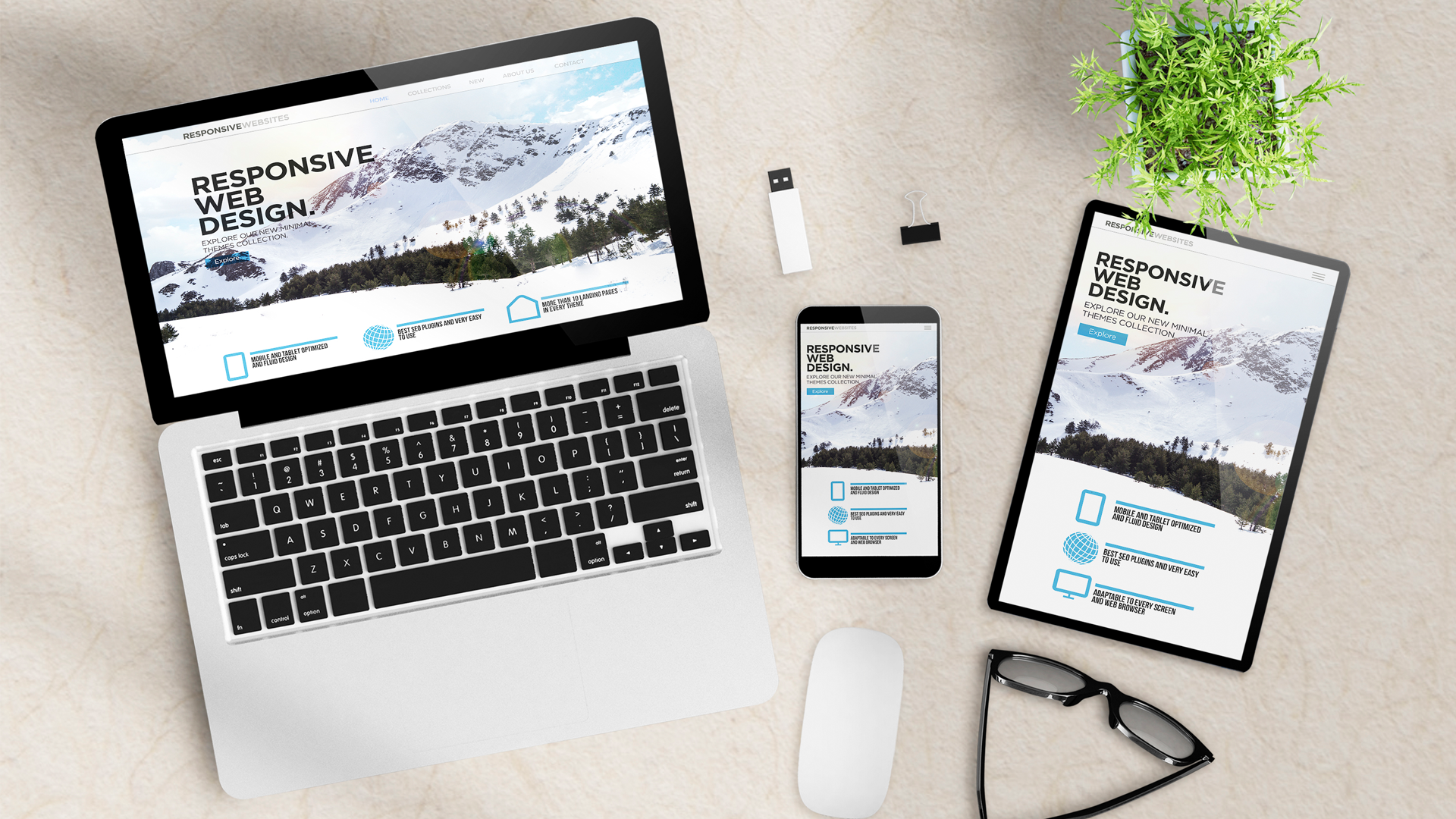Looking to start or upgrade your business blog but intimidated by the competition? Or just intimidated by all the “tech stuff” involved?
Fret not, we got your back!
Since its boom in 2000, blogging has consistently been growing as the hottest and trendiest source of information in the world. You being here looking to start your very own blog page or website is a great first step to expanding your business to greater heights and keeping with the times.
Similar to how online shopping and one-day deliveries are all the rage because it caters to consumers’ growing demand for instant everything, creating a blog for your business or purpose feeds the same craving for bite-sized information.

You’re probably worried about how much work it takes to start one. But I got it down to a few steps that you can easily follow and some helpful tips thrown in to get you the insider recipe for a deliciously successful blog site.
How do you start?
Starting a blog for personal passions or startup business isn’t as hard as you might imagine. But before you jump right in, there are two cornerstones you have to set for a winning endeavor.
Direction
You need a firm grip of where you want it to go from here. What’s your goal? What do you have to offer?
Imagine trying to hit the bullseye with a bow and arrow with a blindfold on. Sounds impossible, right?

It’s hard to hit a target without direct vision. Having a clear goal will guide all your decisions from content to layout up to the smallest detail to reach the same objective.
When you have a clear idea of what your brand is about, it makes it easier for your readers to identify with it. Which in turn, generates higher conversion.
Set your website up
Now that you’re anchored to a vision and have set a mission to accomplish, the next step is to set your website up.
If you’re new to setting up a website, you’re probably wondering how it works. Simply put, for your page to “exist” in the web verse, you need a space to occupy. Kind of like how brands rent stalls in malls. Your blog page must have its own virtual address that people can “visit”.

In this, you have a couple of options:
Use website builders (ready-made)
Hire a pro (custom-made)
If you’re not the techy sort, you’re probably shirking at the idea of building a website. Here’s where website builders come in handy.
Domains like WordPress, Medium, and Tumblr are some of the most popular names in this arena. They are the lifeboat for beginners, hobbyists, and new business owners as their services are easy to use and generally free (added perks might require a subscription but are usually affordable).
But for a more customized page for your brand, there are other options such as Wix, Weebly, or SquareSpace that offer pages with cool features that can make your blog more fun and interesting.
Want an even more elaborate business page? This is where you’ll need web developing services to help build your website for you.

When do you need one?
You’re a busy entrepreneur with many responsibilities (or just not that interested to deal with all this spadework yourself); you’ll need to delegate this particular task to the pros. It’s also especially helpful to hire pros for big projects or businesses that need more complex features on your site, like e-commerce or similar trades.
Why hire a dev service?
Subscribing to a dev service will spare you the trouble of worrying about codes or techy slang that can get intimidating and stressful. The team can design a unique website suited to your envisioned image. The best part is, services like Anindote also work on the backend work that comes with maintaining a web page. It all becomes smooth-sailing on your end so you can focus on other aspects of your business.
What should you blog about?

Scratching your head for ideas? It can be overwhelming to choose topics off the top of your head and under the pressure of a looming deadline. You need to stock up on ideas that you can pull off a hat when inspiration runs dry.
An important keynote when thinking about your content is to consistently reinforce the value your brand brings to your readers.
Having said that, here are some topics you can try on for size:
Tutorials: With people stuck at home these days, more and more are encouraged to pick up a new skill. This is your chance to answer the growing demand for how-to blogs. Know how to organize a messy pantry? Tell us how!
Interviews: Get someone who can add value to your brand by having them share their expertise or relevant experiences so your readers can connect on a more personal level.
Reviews: You can also talk about products or services that are related to your field to be a helpful guide for your readers on what’s good or not. Keep it real to build credibility.
Lists: Lists are short and sweet. It’s exactly what most viewers who don’t feel like reading a lot of words are looking for.
Self-help / Growth: Everyone needs a little boost. Blog about how your readers can grow as individuals and how your brand can help with this improvement.
Health: As this topic never goes out of fashion, it’s ALWAYS relevant. Tie in what your contribution is to the overall well-being of your readers. Remember that health isn’t limited to the physical state alone, mental health is just as important and you can tap into that in your content.
Career / Business advice: Sharing your knowledge and expertise can also show your readers the value you bring to their own careers or business ventures.
FAQs: Create content about common questions your readers might have to show them you are listening. Show them your attentiveness to their concerns so they know you’re always looking out for their best interest.
Trending topics: Get on the bandwagon and see how the hottest trends relate to your blog. Use it to catapult yourself into the spotlight.
Your brand: People connect through understanding. So with a better understanding of your brand and what you stand for, your readers will know your brand better which can hopefully lead to a symbiotic partnership in the future.










Let’s get blogging!
Are you hyped to get started? So am I!
Competition is fierce and as such, you need to equip yourself with all the necessary tips and tricks in the trade to rise above it. Every adventure should start with preparations. It’s important to establish a strong base before you explore where your niche is.
Below are some of the building blocks you can use to fashion into a blog page that blows people away:
Keep a notepad.
Brainstorm and schedule content.
Flex your brand.
Type with your voice.
Be consistent.
Cite your sources.
Be your own editor.
Spell out their takeaways.
End with a mic drop moment.
Engage. Engage. Engage.
Share your content on social media.
Set up subscriptions and newsletters.
Keyword generation is key.
Mind your blog’s look.
Clutter. No one likes a mess, so remove unnecessary debris that can get distracting. Keep your page minimalistic and easy on the eyes.
User-friendly. Highlight important details with eye-catching and logical layouts. Make it easy for anyone to navigate around your blog.
Snappy. If you can help it, make your page “light” by not using heavy media files or overload it with plugins. Compress what can be compressed or partner with pros for complex features that might need expert coding for efficiency.
Think Mobile.

Write your blog post ideas on a notepad that you keep close at all times.
Studies from well-renowned universities, such as Princeton and the University of California have done research to prove that there are substantial benefits to taking notes the old-school way.
Our thoughts and ideas don’t exactly form a neat line for you when inspiration hits. So although it might sound primitive to some people, writing it down with a pen and paper is helpful in allowing time for you to process the information you’re churning and making it more concrete.

Plan your topics with the intent to keep faithful to your branding and to allot proper time to prepare it for publishing. Quality above quantity should be the rule of thumb for a blog that’s dense with substance.
Create a system and a schedule you can commit to consistently. Sparing time to do all the non-writing legwork, like research and editing, is just as important as writing the actual content itself as it ensures a powerful and effective output.
Maintaining a successful blog is a full-time gig. Anticipate that the upkeep will knock a few grains of sand off the hourglass and plot them in your calendar accordingly.

You see a cute guy/girl, what do you do? You try to talk yourself up. That’s usually the instinctive reaction.
Similarly, when trying to convince readers to believe your words, you want to look credible and impressive. Which is why it’s important to show your readers why you’re the voice they should be listening to. Tell them your qualifications to credit your know-how and the depth of your experience to give them a better handle of your capabilities.
Show them your badges of honor to give them a glimpse of what they can expect from you and why you should be trusted to know what you’re talking about. Who are you? What do you represent? What can you offer? Talk about it in your About me section.

At uni, the heavier your words are, the smarter you sound. The same does not apply to blogging, though.
People come to blogs to get simpler answers and quirky but informative content. So make your content palatable and relatable to the general audience by using a more casual and comfortable language.
Your words should be easy to absorb and conversational so your readers won’t get bored and close the tab. Especially if your topics are technical or conceptually challenging.
Besides, by using your own voice in your write-up, you also exhibit your innately unique style that will draw in the right kind of like-minded readers.
Inspiration is a fickle friend. Running your blog to the flow of your “Eureka” moments is not ideal.
No one hangs out in an abandoned mall (unless you’re up to no good). Using the same logic, if you’re not consistent with producing content it might look abandoned or inactive and would not have a lot of traffic. Let your readers know that there’s something to look forward to every week.

Set weekly milestones to keep you inspired to produce content. Keep a list of blog post ideas (or pick off from the list I gave previously) so you always have something to write about.
Chop your tasks down to bite-sized pieces so you don’t get overwhelmed by the amount of work. Research today, write tomorrow, then edit the day after that. Keep your page “alive” with regular updates.
Not everything we read on the internet is a fact. That being said, you wouldn’t want to be lumped with fake news and spread misinformation.

To be a credible source of knowledge, always use concrete examples to support your arguments and pull out resources to construct stable evidence, if needed.
Luckily, the internet is ripe with data, studies, and research materials at your disposal. Google, my friend, is the magic wardrobe to a Narnia-like world of information.
Successful blogs have integrity, that’s what sets them apart from regular fodder. Aim to be THAT kind of blog and not one that just spouts rubbish.
After writing up a fun content, you might be itching to click Publish as soon as you type the last dot. But you might want to take a step back a beat and read through it a few times before doing so.

Take off your “writer” hat and don your “reader” ones before combing through your work a second time. This time, objectively look into the flow of your writing to see if they are cohesive and easy to grasp.
Cut out some things for when you got a little carried away (It happens to everyone) and elaborate and some points you might have missed to hash out.
Finally, check on your grammar. While one might argue that grammar isn’t everything, using proper (the basics, at the very least) grammar shows professionalism and seriousness in your handiwork. Take your write-up seriously, or no one else will.
Even if your readers already know what they came for when they clicked on your page, it’s still essential to reinforce what they can take away from reading your work.
What do you offer? How will you make a difference for them?
Connect your purpose to theirs and create a “we” environment that ties their concerns with your solution-driven resolution. It’s not just YOUR problem, it’s OURS.

Reminding the reader of your concluding point will fashion a stronger impact that resonates with them on a deeper level. Which in turn, improves the overall customer experience.
The movie Inception was such a hot topic when it came out because, in part, of how it ended. People were compelled to churn their own interpretations and talk about it.

This is what you should be aiming for. Not the part where everyone was confused with the ending, but a thought-provoking finale that triggers some level of processing. Get your readers pondering over how the new knowledge they got from you can be applied to their lives.
Ask them follow-up questions or their opinions about the topic. Maybe they have ideas to make your concept better. Encourage your readers to interact on your page.

Blogging isn’t a one-way conversation. It doesn’t end after posting your work. Engaging with your readers is the after-service maintenance that you have to keep up to make your website active.
Take time to regularly reply to comments or questions left on your articles. Show them you are one with your community and that you are reachable for further discussion about your topics.
Personality is better shown than said. So while the About Me section explains what you represent, interactions are what truly show who you are as a brand.

Admit it. You spend the better part of the day browsing through social media. These days, everyone is.
Social media has quickly become the millennia’s virtual watering hole — a place for everyone to check out what everyone else is up to. Where people gather to catch up and share funny memes or useful infographics.
Public figures, and even the government, now use it to advertise their work and keep their followers updated. Point is, everyone is on it.
Be it on Facebook, Instagram, Twitter, or wherever else kids are on these days, let your content be more available for reading and convenient to share for better visibility.
The best part is that it’s completely FREE.
So get on it. Share your blog link on your social media pages right now!
You might write off email newsletters as unnecessary but you’re missing out on a lot of possible visits if you don’t initiate subscription options on your web pages.
Setting up an effortless subscription to newsletters flags your readers about activities on your page that might interest them. Services like MailChimp or Sender.net can have a pop-up signup form to make it easier for anyone to opt in.

Depending on your budget, you can also hire web developers for a more advanced or customized system. Welcome emails for new subscribers and weekly updates on your most recent posts are great ways to involve the community in your blog.

Search Engine Optimization (SEO) is a system that uses algorithms to decide what shows up on your Search Engine Results Page (SERP).
Every time you type something on Google or Bing, the system collects data from everywhere and uses factors like keywords, loading speed, and activity of pages to come up with relevant results.
Knowing which keywords trigger the scope in your content, you can increase your chances of getting ranked higher.
Since no one really clicks on the 3rd or 4th O on Gooooogle, you’d want to be on the first page of the search.

Aesthetics isn’t just about your page looking pretty. It’s also a testament to your brand.
Therefore, if you want to turn your blogging game up, here are some things to look into:
As I noted earlier, easy-to-use website builders are accessible for ready-to-go pages if you just want to test the waters or are under a strict budget.
But say you want to be a little extra or would like to add a Blog section to your already existing page, you can partner up with web developers to accommodate more personalized requests to fit your brand to a T.
A professionally done website will definitely give your page a more in-brand user experience.
According to statistics by Medium ( a leading blog platform) in 2019, 68% of their users read articles on mobile. That’s more than half of the traffic that can be converted to potential readers.

Aim for the on-the-go interface that works perfectly on mobile as well as it does on a desktop to keep your user experience on the up and up.
On the plus side, most ready-made websites are responsive and work on any device. All you have to do is choose themes that you feel work for your brand best. If you’re subscribed to a custom-made partnership, you can consult or hire a developer who can redesign your page to make it optimal for small screen viewing.
What’s next?
Armed with the guide you’ve just learned you can now work on getting your blogging game on point. Whatever steps you decide to take, the important part is to start NOW.

The road to success isn’t paved with half-baked actions but with a dedicated passion for excellence. So channel your favorite blogger, spice it up with your own twist, and ace the blogging game!
To know more about better ways to design striking websites, check out what we can do for you HERE!

Good day! I just wish to give you a huge thumbs up for your excellent information you have got here on this post. I am coming back to your blog for more soon.
Anonymous
Mar, 20 2022 at 6:48 pm
Right here is the perfect webpage for everyone who would like to understand this topic. You understand a whole lot it’s almost tough to argue with you (not that I really will need to HaHa). You certainly put a fresh spin on a subject that has been discussed for a long time. Wonderful stuff, just excellent!
Anonymous
Apr, 18 2022 at 4:09 am
Nice post. I be taught something more difficult on different blogs everyday. It is going to always be stimulating to read content from other writers and practice slightly something from their store. I’d prefer to use some with the content material on my weblog whether or not you don’t mind.
Anonymous
Apr, 19 2022 at 6:41 am